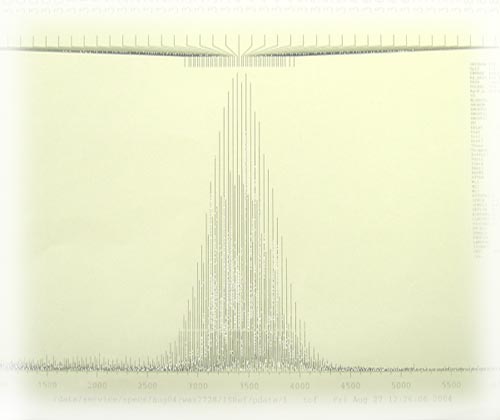Other Services
Optical Rotation
 Mass Spectrometry can be used to obtain structural information or a unique molecular formula. The sample is vaporized under vacuum then ionised by one of several methods, depending upon the information required and type of sample. Finally the ions are accelerated into a magnetic field and the field strength increased to bring successively heavier ions into the collector slit. The ions are detected, amplified and recorded as peaks at various mass units.
Mass Spectrometry can be used to obtain structural information or a unique molecular formula. The sample is vaporized under vacuum then ionised by one of several methods, depending upon the information required and type of sample. Finally the ions are accelerated into a magnetic field and the field strength increased to bring successively heavier ions into the collector slit. The ions are detected, amplified and recorded as peaks at various mass units.
Techniques available:
(EI) Electron Impact, Mass range below 900 Da. EI causes a large degree of fragmentation which gives structural information about the sample.
(CI) Chemical ionisation, Mass range below 900 Da . CI is a softer technique which is used if EI does not produce a molecular ion.
(LSIMS) Liquid Secondary Ion mass spectrometry, Mass range 50 – 5000Da. Samples must be a high melting point solid, soluble in a matrix
(ESIMS) Elecrospray Ionisation Mass Spectrometry, Mass range 50 – 100KDa. Samples must be polar and not contain involatile buffers or salt impurities.
Accurate Mass Analysis. High resolution accurate masses can be obtained provided a low mass analysis has been obtained on the same sample.
(MALDI-TOF) Matrix Assisted Laser Desorption Ionisation – Time of Flight, Mass range 500 – 500000Da. Used for polymers, proteins, peptides etc
Hypehenated Techniques GC – MS and LC – MS are also available
Sample Requirements: Approximately 5 mg.
Other Requirements: Solubility, structural formula & molecular mass Ionization
technique, COSHH data.
For quickest response, please download and send us an Analytical Data Form with each quotation request.
>> Analytical Data Form (pdf) (doc)
This technique is not accredited to UKAS ISO 17025
